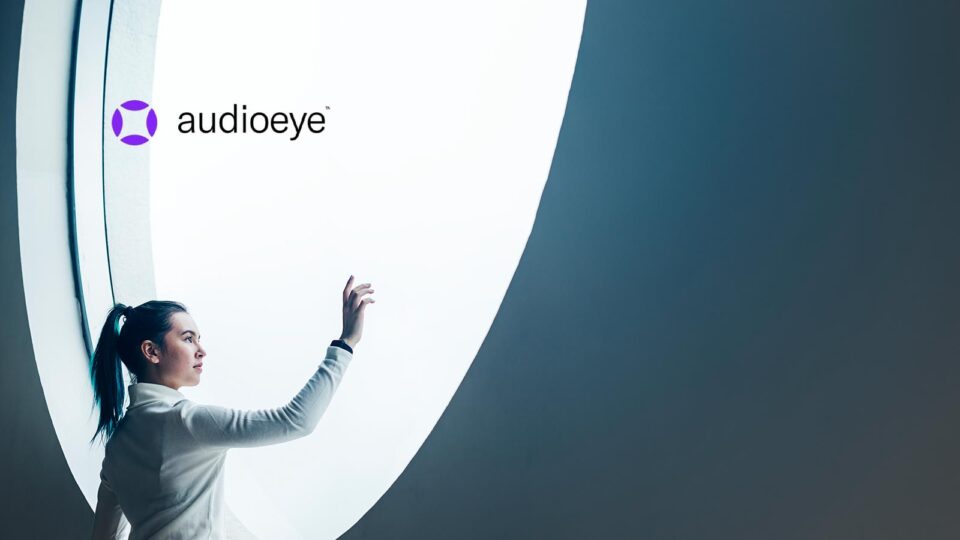Research, Insights, and AudioEye’s Unique Approach to Accessibility
AudioEye, Inc. the industry-leading digital accessibility platform delivering website accessibility compliance to businesses of all sizes, today released a white paper on the state of accessibility and the company’s innovative approach to closing the web accessibility gap.
Top iTechnology Digital Trasformation News: Viva Wallet and Mastercard accelerate digital transformation in Évora
“While society’s reliance on the internet increases at a fast pace, progress on making every website accessible to people with disabilities remains slow and uneven,” said David Moradi, CEO at AudioEye. “To close the digital accessibility gap, we need an approach that can tackle the scale of the internet, the speed of content creation, and the scope of accessibility issues allowing equal access to every website user, while providing businesses and content creators with a sustainable and affordable solution for the long term.”
Accessibility vendors on the market today range from simple automation-only solutions to labor-intensive, expensive manual audits. AudioEye’s research, which included user surveys and both automated and manual analysis of websites across industries, shows that the most effective and affordable way to solve web accessibility is through a hybrid solution which pairs technology with subject matter experts.
By 2030, almost two billion people are expected to be using assistive technology, such as screen readers. This consideration means solving digital accessibility issues at scale is critical to ensuring that everyone, regardless of ability, can use and benefit from the internet.
Key challenges in accessibility today
There are currently 1.9 billion websites online, with more than 250,000 new sites going live every day. Based on AudioEye’s calculations in this table and assuming the websites are of average complexity, it would take approximately 167 billion hours for a person to fix every website manually, or more than 80 million implementers working for an entire year. If the average implementer is able to make source code fixes and works 40 hours a week at an annual wage of $100K, the solution would still require 40 million implementers working for an entire year at the cost of $4 trillion USD to fix just half of the websites on the internet.
On March 18th, 2022, the Department of Justice (DOJ) published web accessibility guidance, reaffirming that the Americans with Disabilities Act’s (ADA) accessibility requirements apply to digital content. In the release, the DOJ discusses the importance of web accessibility, advocates the use of the Web Content Accessibility Guidelines (WCAG), and lists a number of recent settlements with businesses, demonstrating its ongoing efforts and commitment to website accessibility.
Top iTechnology IOT News: New WebbingCTRL Provides Enterprises with Complete, Zero-Touch Global IoT Control over Carrier Connectivity
Despite the growing awareness of digital accessibility in the private sector, renewed efforts by government, and expectations of inclusivity, the following challenges continue to impact progress:
- Ambiguity between legal and technical frameworks
- Misleading discourse and lack of transparency
- Current limits of technology
- Dynamic nature of websites and speed of content creation
AudioEye research findings and discussion
- Based on an analysis of 3,500 websites across 22 industries, including healthcare, e-commerce, and employment, AudioEye found that 79% of the websites had at least three severe accessibility issues, i.e., issues that can potentially block an assistive technology user from interacting with the content and/or completing the goal of a site visit, such as submitting a form or requesting information.
- 83% of e-commerce sites, 78% of healthcare sites, and 77% of jobs and career sites had accessibility issues that block or significantly impact a user’s ability to complete key tasks, such as viewing product descriptions, completing a purchase, filling out an application, or booking an appointment.
- In a broader analysis, which included 20,000 websites, AudioEye found that 5.8% of the sites were using some type of an automated digital accessibility solution. AudioEye also found that despite running automation-only accessibility solutions, most sites still had accessibility errors with significant impact on the user experience.
- The analysis of sites with the AudioEye solution showed that up to 95% of accessibility issues can be fixed and prevented using a mix of automated and manual remediations without the need to modify the original website code.
- Upon conducting a manual audit of 55 randomly selected websites that were using only traditional audit and remediation services, AudioEye found over 950 accessibility issues. 41 of these sites had one or more severe accessibility issues, such as non-functional site navigation, unlabeled graphics, inaccessible video controls, and other issues that made digital content and tools inaccessible to people with disabilities.
- In an AudioEye survey of business leaders and web professionals, 70% of 500 respondents said that “cost” is one of the top concerns in addressing website accessibility.
- In a survey of assistive technology users, 54% of respondents said they feel that e-commerce companies “don’t care about earning their business.”
- In another AudioEye survey of assistive technology users, respondents selected the top three accessibility problems as keyboard navigation, missing or unhelpful headings, and empty or missing form labels. These issues persist across retail, healthcare, finance/banking, education, and other websites that play an essential role in everyday life.
“When the COVID-19 pandemic struck, in many cases making digital the only channel through which customers could interact with brands, Forrester saw a significant uptick in inquiries related to accessibility, mostly from companies getting serious about accessibility for the first time. The pandemic served as a wake-up call not just about the importance of digital accessibility but also about its benefits…,” wrote Gina Bhawalkar, Principal Analyst at Forrester in Digital Accessibility Enters The Spotlight As A Business Priority, April 2021.
Top iTechnology Cloud News: MacroFab Cloud Manufacturing Platform Updated with New Component Suppliers, Flexibility in Material Sourcing Options
[To share your insights with us, please write to sghosh@martechseries.com]


